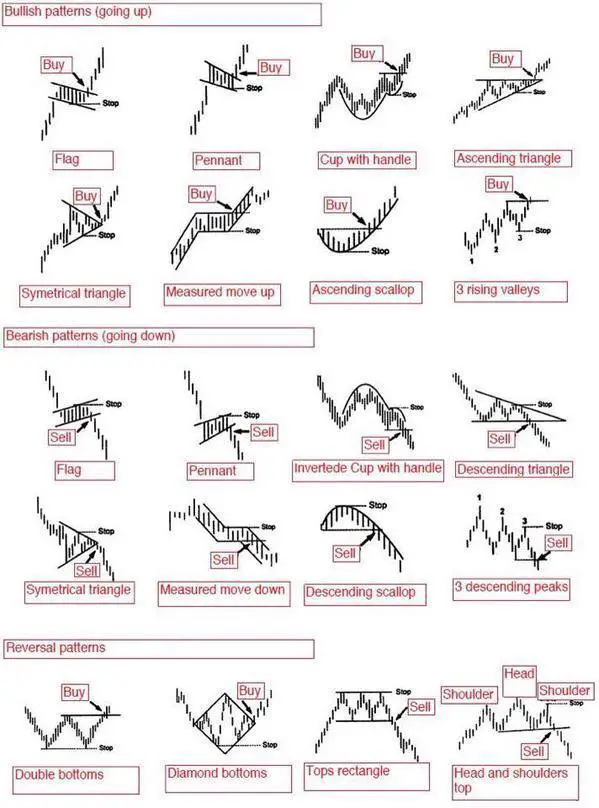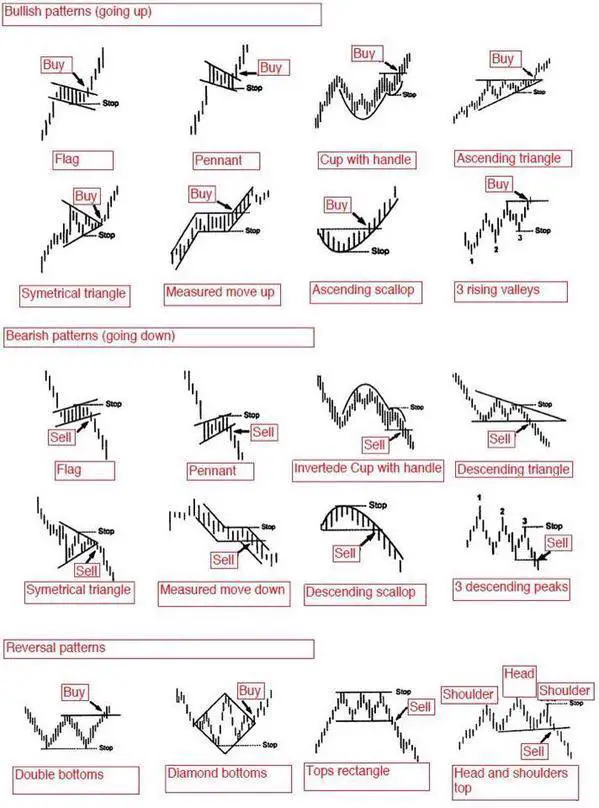 What exactly is a chart pattern?
What exactly is a chart pattern?
A chart pattern is a visual representation of the actions of buyers and sellers in a market recorded in price action.
A chart is not predictive of the future but shows what is happening with buyers and sellers in the present moment.
The price action on a chart gives a trader signals about the current trend of a market and the path of least resistance.
Bullish chart patterns represent that a market is currently in an uptrend and is usually signaled by a break out of resistance to a higher price.
Bearish chart patterns represent that a market is currently in a down trend and is usually signaled by a breakdown of price below support to a lower price.
A reversal chart pattern shows that a trend may be near its end and could be reversing.
Chart patterns are identified by connecting higher highs and higher lows for up trends or lower lows and lower highs for downtrends to identify trend lines.
The primary tool for identifying a chart pattern is with trend lines.
Different chart patterns identify different types of markets: sideways, uptrend, downtrend, and reversing.
The purpose of using chart patterns in trading is to identify current price action patterns and trade using signals to capitalize on it.
Trading chart patterns is one of the most pure and simple forms of technical analysis and reactive trend trading. Price is your guide and breakouts are your signals. Chart pattern can be used on different timeframes and in all types of market environment. Chart patterns breakdown and become ineffective in volatile markets are when prices reverse back into the previous range. Chart patterns work best in markets that trend strongly after a break out of a range. Chart patterns are price action trading tools.
